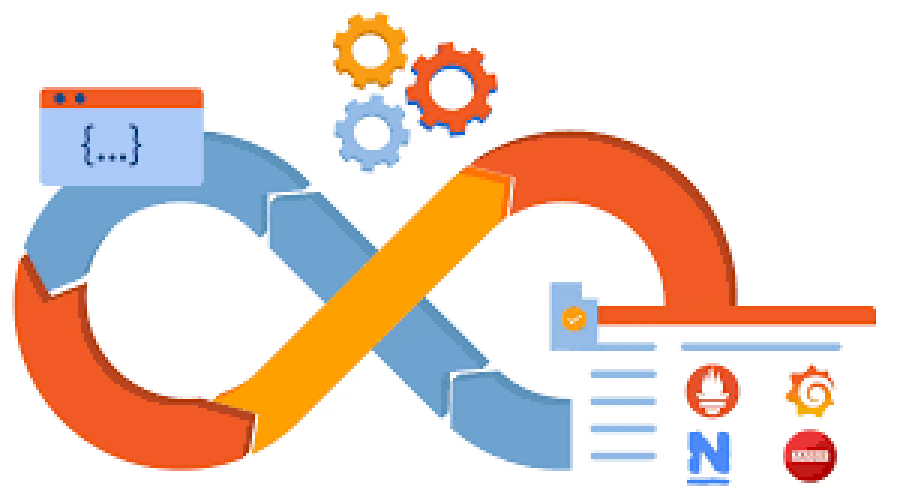How to Offer Real-Time Financial Monitoring as a Freelance Service
In today’s hyper-connected business environment, clients demand instant insights into their financial health. Real-time financial monitoring has emerged as one of the most valuable freelance services in the finance industry, enabling businesses to track cash flow, revenue, expenses, and compliance indicators continuously.
For freelance accountants and financial consultants, mastering real-time monitoring not only adds high-value service offerings but also differentiates you from competitors still operating with traditional reporting cycles. This guide will walk you through how to offer real-time financial monitoring, the tools you need, and best practices to deliver exceptional value to your clients.
Long Description
1. Understanding Real-Time Financial Monitoring
Real-time financial monitoring involves tracking and analyzing financial transactions as they happen, using digital tools that sync with bank accounts, payment platforms, POS systems, and accounting software.
Benefits include:
Immediate visibility into financial performance 📊
Faster decision-making for business owners
Reduced risk of fraud or accounting errors
Streamlined tax compliance with up-to-date records
For freelancers, this means you can serve clients anywhere in the world without waiting for monthly or quarterly reports.
2. Why Businesses Are Paying for This Service
Small businesses, startups, and eCommerce stores have dynamic financial needs:
They operate with tight cash flow margins.
They need quick reaction times to market changes.
They must keep investors informed with accurate data.
When you provide real-time monitoring, you’re not just offering accounting—you’re providing a decision-support system. That’s a game-changer for client relationships and retention.
3. Tools You’ll Need for Real-Time Monitoring
Here are the essential categories of tools you should master:
a. Cloud-Based Accounting Platforms
QuickBooks Online
Xero
FreshBooks
These platforms integrate with multiple bank accounts and automate transaction categorization.
b. Financial Dashboard & BI Tools
Power BI or Tableau for advanced analytics
Zoho Analytics for freelancers with budget constraints
c. API Integrations
Use APIs from payment gateways (Stripe, PayPal) or eCommerce platforms (Shopify, WooCommerce) for live data feeds.
d. Secure Cloud Storage
Google Workspace
Microsoft OneDrive
Dropbox Business
Security is non-negotiable when handling live financial data.
4. Setting Up Your Freelance Real-Time Monitoring Service
Step 1 – Define Your Service Scope
Decide if you’ll only offer monitoring or include alerts, analysis, and advisory services.
Step 2 – Choose Your Tech Stack
Select tools that are compatible with your clients’ systems.
Step 3 – Create Client Dashboards
Build dashboards with KPIs relevant to their business model.
Step 4 – Establish Communication Channels
Use Slack or Microsoft Teams for instant updates when financial anomalies occur.
5. Pricing Your Service
You can structure pricing in three ways:
Monthly retainer (most popular for ongoing monitoring)
Per dashboard/client setup fee plus ongoing maintenance
Performance-based pricing if you tie monitoring to measurable results (e.g., reduced losses)
💡 Tip: Real-time monitoring is high-value; don’t underprice yourself. Many freelancers charge 2x more for live tracking compared to traditional bookkeeping.
6. SEO & Marketing Your Service
Since you’re offering a niche financial service, your marketing must target specific pain points:
Use keywords like real-time accounting, instant financial insights, and freelance financial monitoring.
Write blog posts on “Why Businesses Need Real-Time Financial Data” or “Top Tools for Real-Time Accounting.”
Showcase case studies where your monitoring helped a client save money or avoid a financial crisis.
7. Legal & Compliance Considerations
When dealing with live financial data, privacy laws such as GDPR (EU) and CCPA (California) apply.
Always use encrypted communication channels.
Sign NDA agreements with clients.
Ensure all software you use is compliant with financial data protection standards.
8. Common Challenges & How to Overcome Them
Data Overload: Avoid overwhelming clients with too much information—focus on key metrics.
Integration Issues: Test your tech stack thoroughly before onboarding clients.
Security Risks: Use multi-factor authentication and regular security audits.
9. Scaling Your Service as a Freelancer
Once you’ve set up processes:
Offer tiered packages for startups, SMEs, and enterprises.
Hire subcontractors for dashboard setup while you focus on advisory roles.
Bundle real-time monitoring with forecasting, budgeting, or virtual CFO services for higher revenue.
10. Final Thoughts
Real-time financial monitoring is no longer a luxury—it’s becoming a necessity for modern businesses. As a freelancer on FreelancerBridge, offering this service puts you in a premium service category, allowing you to:
Earn more per client
Build stronger long-term relationships
Stay ahead in the competitive freelance finance market
If you master the tools, processes, and compliance standards, you can position yourself as the go-to financial partner for clients who value speed, accuracy, and actionable insights.
In today’s hyper-connected business environment, clients demand instant insights into their financial health. Real-time financial monitoring has emerged as one of the most valuable freelance services in the finance industry, enabling businesses to track cash flow, revenue, expenses, and compliance indicators continuously.
For freelance accountants and financial consultants, mastering real-time monitoring not only adds high-value service offerings but also differentiates you from competitors still operating with traditional reporting cycles. This guide will walk you through how to offer real-time financial monitoring, the tools you need, and best practices to deliver exceptional value to your clients.
Long Description
1. Understanding Real-Time Financial Monitoring
Real-time financial monitoring involves tracking and analyzing financial transactions as they happen, using digital tools that sync with bank accounts, payment platforms, POS systems, and accounting software.
Benefits include:
Immediate visibility into financial performance 📊
Faster decision-making for business owners
Reduced risk of fraud or accounting errors
Streamlined tax compliance with up-to-date records
For freelancers, this means you can serve clients anywhere in the world without waiting for monthly or quarterly reports.
2. Why Businesses Are Paying for This Service
Small businesses, startups, and eCommerce stores have dynamic financial needs:
They operate with tight cash flow margins.
They need quick reaction times to market changes.
They must keep investors informed with accurate data.
When you provide real-time monitoring, you’re not just offering accounting—you’re providing a decision-support system. That’s a game-changer for client relationships and retention.
3. Tools You’ll Need for Real-Time Monitoring
Here are the essential categories of tools you should master:
a. Cloud-Based Accounting Platforms
QuickBooks Online
Xero
FreshBooks
These platforms integrate with multiple bank accounts and automate transaction categorization.
b. Financial Dashboard & BI Tools
Power BI or Tableau for advanced analytics
Zoho Analytics for freelancers with budget constraints
c. API Integrations
Use APIs from payment gateways (Stripe, PayPal) or eCommerce platforms (Shopify, WooCommerce) for live data feeds.
d. Secure Cloud Storage
Google Workspace
Microsoft OneDrive
Dropbox Business
Security is non-negotiable when handling live financial data.
4. Setting Up Your Freelance Real-Time Monitoring Service
Step 1 – Define Your Service Scope
Decide if you’ll only offer monitoring or include alerts, analysis, and advisory services.
Step 2 – Choose Your Tech Stack
Select tools that are compatible with your clients’ systems.
Step 3 – Create Client Dashboards
Build dashboards with KPIs relevant to their business model.
Step 4 – Establish Communication Channels
Use Slack or Microsoft Teams for instant updates when financial anomalies occur.
5. Pricing Your Service
You can structure pricing in three ways:
Monthly retainer (most popular for ongoing monitoring)
Per dashboard/client setup fee plus ongoing maintenance
Performance-based pricing if you tie monitoring to measurable results (e.g., reduced losses)
💡 Tip: Real-time monitoring is high-value; don’t underprice yourself. Many freelancers charge 2x more for live tracking compared to traditional bookkeeping.
6. SEO & Marketing Your Service
Since you’re offering a niche financial service, your marketing must target specific pain points:
Use keywords like real-time accounting, instant financial insights, and freelance financial monitoring.
Write blog posts on “Why Businesses Need Real-Time Financial Data” or “Top Tools for Real-Time Accounting.”
Showcase case studies where your monitoring helped a client save money or avoid a financial crisis.
7. Legal & Compliance Considerations
When dealing with live financial data, privacy laws such as GDPR (EU) and CCPA (California) apply.
Always use encrypted communication channels.
Sign NDA agreements with clients.
Ensure all software you use is compliant with financial data protection standards.
8. Common Challenges & How to Overcome Them
Data Overload: Avoid overwhelming clients with too much information—focus on key metrics.
Integration Issues: Test your tech stack thoroughly before onboarding clients.
Security Risks: Use multi-factor authentication and regular security audits.
9. Scaling Your Service as a Freelancer
Once you’ve set up processes:
Offer tiered packages for startups, SMEs, and enterprises.
Hire subcontractors for dashboard setup while you focus on advisory roles.
Bundle real-time monitoring with forecasting, budgeting, or virtual CFO services for higher revenue.
10. Final Thoughts
Real-time financial monitoring is no longer a luxury—it’s becoming a necessity for modern businesses. As a freelancer on FreelancerBridge, offering this service puts you in a premium service category, allowing you to:
Earn more per client
Build stronger long-term relationships
Stay ahead in the competitive freelance finance market
If you master the tools, processes, and compliance standards, you can position yourself as the go-to financial partner for clients who value speed, accuracy, and actionable insights.


 by Emily
by Emily




